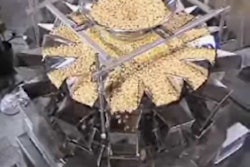
That’s according to Stuart Leslie, president of structural branding
firm 4sight, Inc., which has been involved in the
redesign of packaging for products such as Unilever’s Suave hair care
line and Lebanon Seaboard’s Preen
Weed Control—both of which realized
greater cost efficiencies and higher sales through more sustainable
package designs.
As Leslie tells Packaging World, since Wal-Mart announced its Packaging
Scorecard and sustainability initiatives to the packaging community in
2006, 4sight’s clients have struggled to understand how to balance
their profitability goals with their responsibilities toward more
environmentally friendly packaging. “With sustainability, if you
misinterpret how it applies to your product, you could find yourself
creating something that’s not desirable for your consumer,” relates
Leslie. “This can be a critical problem, considering that the consumer
is not really that interested in sustainability yet.”
His firm has found that there are two elements of package design that
can almost always be improved to provide greater sustainability:
*Material usage: Find the best material that gets the job done, Leslie
says, and use as little of that material as possible. “That’s the first
cornerstone,” he says. This includes understanding what is required for
all packaging components, and how these components are used by the
consumer. “Once we know the maximum performance that the consumer
needs, we can work toward meeting that need in a way that reduces as
much material as possible.” In addition to using less packaging
material, Leslie also advises the use of recyclable materials, when
possible.
*Efficiency of footprint: “This really comes down to how many packages
you can fit on a pallet, so that you can get more products on the
truck, so that you are driving fewer trucks down the road,” Leslie
says. This requires optimizing the package design to fit exactly on the
pallet so that the dimensions are determined from fully filling out the
truck, including the height, the depth, and the width.
“Wal-Mart likes it because they can fit more products on the shelf,” he
adds. “They figure, if they can fit more products on the shelf, that
will increase their profitability. And, as long as you deliver
solutions that are still in keeping with the consumer’s expectations,
then it’s a win-win-win for everybody.”
After optimizing material usage and package footprint, sustainable
benefits become harder to calculate using methods such as increased
packaging line efficiencies, Leslie says. “We find that it is so much
easier to focus on areas where you clearly save money and clearly make
a product that’s more profitable,” he says.
As Leslie notes, while confusion may exist among his clients as to how
to incorporate sustainability into their packaging, there is no lack of
willingness to make the changes necessary. “They genuinely want to make
a difference,” he says. “People are creatively, ambitiously looking for
real solutions. They are not just saying, ‘Let’s meet the requirements
of the scorecard,’ but rather, ‘Let’s rethink our product. Let’s change
the formulation. Let’s really make a product that truly is more
sustainable for the planet.’”





























